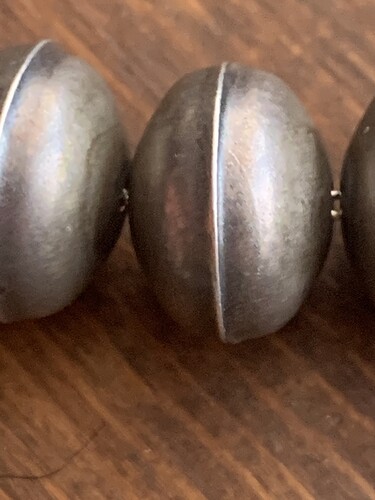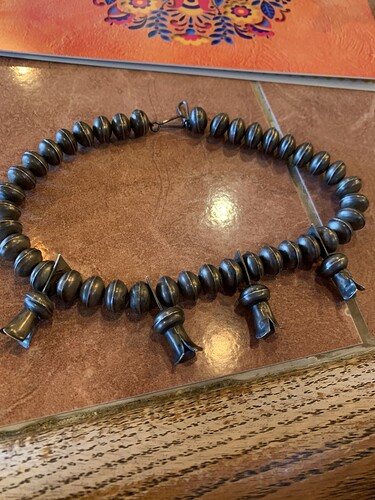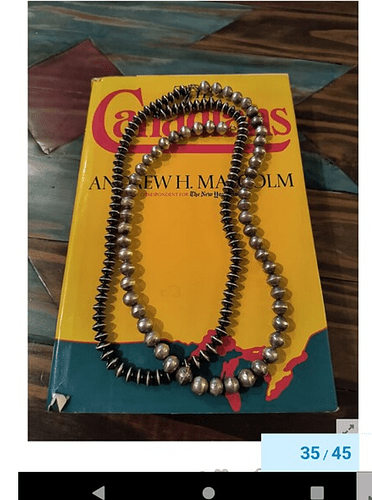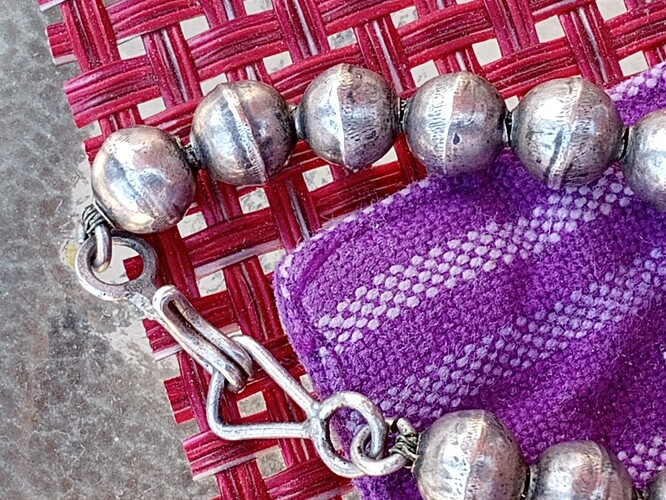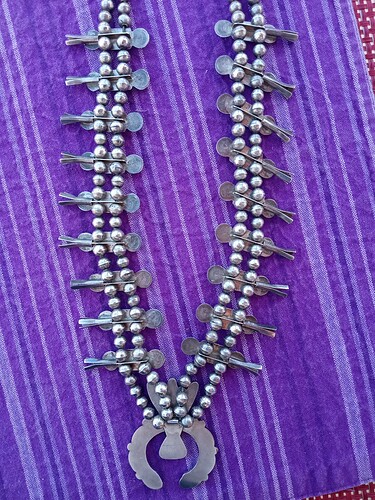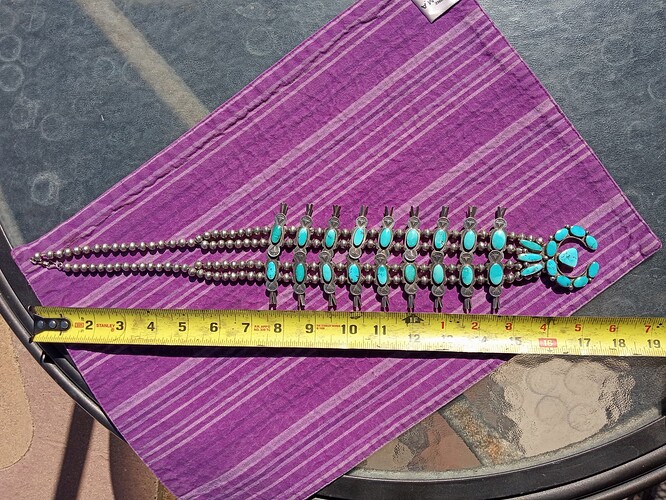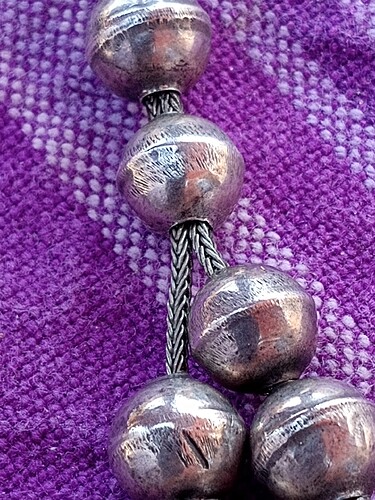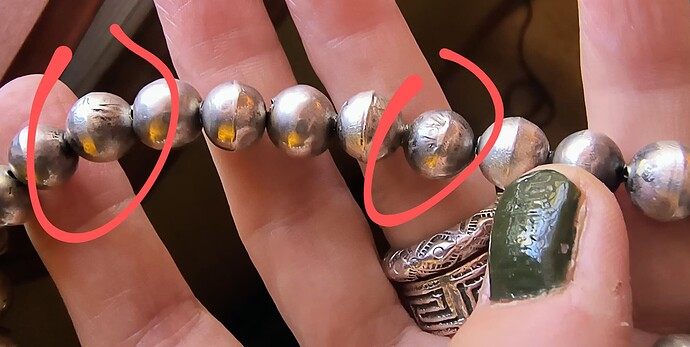examples and questions have popped up a lot regarding handmade vs machine etc. I just can’t seem to get it right ![]()
sometimes I think something is handmade but then it’s proven to be machined, vice versa.
What does the forum think of these? Thanks, hope everyone is doing great!
They look handmade to me. The flanged seams are a bit unusual. Normally the seams (solder joints) on handmade beads would be filed smoother and more even with the surface. Leaving a pronounced tiny flange on them is a nice touch. Adds an extra element of refinement.
Beautiful necklace!
Same here. This would be the perfect thread to have a few photo examples of each for comparison. ![]()
Yes! I agree. I have a hard time with this.
Love, love, love your necklace Tara!
I’m going to post these 2 of mine again, because I really don’t know a lot about the older necklace. I bought it pawn at Cameron Trading Post, and I remember the Navajo lady really liked it, and said it was “older,” but I don’t remember anything else (I don’t even know if I knew exactly what questions to ask back then). I feel like it may be handmade, because the beads are are not exactly the same. The oxidized saucer pearls I bought at the Eiteljorg Indian Art Market, and the artist told me it was handmade. But I can’t see a difference in it and some of the ones that aren’t handmade. I don’t have a good enough eye for this yet.
And beads that are benchmade are not considered handmade, correct? But they’re not completely machine made?
These are small- smaller than an average pea with over two- hundred pearls in the necklace. Verbal history says the necklace was acquired in 1960 and it had some age at that time.
So @raysha, to help us out in this thread, are those handmade?
I’m not an expert- in my opinion, yes these are handmade. I guess it’s open for discussion ![]()
I just saw the last picture you posted. I didn’t realize it was THAT amazing squash that we previously discussed on here. And I think people thought they were handmade. That would have been my guess, but I clearly don’t know enough about Navajo pearls ![]()
100% handmade. File marks and all!
It will be cool to see different examples here, possibly with some histories and details of the pieces, to learn from.
Perhaps I have been wrong all these years( I know some folks who would shy), but I always assumed “ bench made” is the same as hand made. I take this from the furniture world I suppose. Any help here?
@mmrogers Can you please help me to understand where the file marks are located? In raysha’s 1st photo, are those the lines that appear horizontal to the bead’s “seam”? Or, are the file marks on the seam? Just trying to understand what I’m looking at. Thanks for your help. This is an interesting thread.
@August You’re not alone ~ I’ve always thought bench made meant that an item was handmade.
@raysha Thank you. I don’t think I’ve ever noticed file marks (or knew to look for them) on beads before.
So, Bmpdvm posted an article on man-made vs machine made. If I understood it correctly, and I’m not sure I did, handmade would be everything entirely by hand, benchmade would be buy the haves and hand solder them together, and machine made is when you buy the bead and string it. Am I anywhere close on that?
I’d be more inclined to call these particular marks tooling marks. When silver is hammered on a steel surface it will pick up a negative impressions from the surface upon which it is being worked. These particular beads are interesting in that from the surface anomalies they look like they’re cast and then soldered together. If cast, any anomalies in the waxes will show up in the finished casting
Machine made is when the halves are stamped out or cast by machine, and machine soldered together.
Raysha is correct. The directional lines on either side of the seam are marks made when the silversmith filed the edges of the seam smooth.
